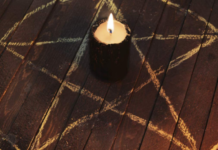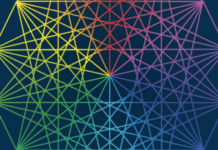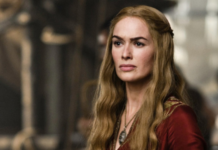What is the Henge of Keltria?
The Henge of Keltria is an organization dedicated to the positive, life affirming spiritual path of Neo-Pagan Druidism we call Keltrian Druidism. The Henge exists to provide information and training to those interested in Keltrian Druidism.
What do you mean by ‘Neo-Pagan’ and by ‘Druidism?’
The word Pagan is generally used to describe pre-Christian religions that existed throughout the Western world. ‘Neo’ means new, so Neo-Pagan would literally mean new Pagan. Neo-Pagan is used to describe the people who are part of the revival of some of the beliefs and practices of these old pre-Christian religions. Neo-Pagans often drop the prefix and just call themselves Pagans.
Druidism is our modern adaptation of ancient Celtic religion. The priests of the ancient Celts were called Druids.
Who were these Druids?
The word Druid probably comes from the Greek word Drus, meaning oak, and the Indo-European wid, meaning knower. Literally, Druid means ‘oak-knower’. The Druids did not have many buildings for worship. The classical writers noted that the Druids’ preferred sanctuaries were forest clearings.
Although the Celts existed throughout much of Europe, the Druids were known to exist only in what is called the latter Celtic range. This area is basically Gaul and the British Isles.
The priestly class of these Celts were on an equal level with nobility. They included the Druids (priests), Bards (poets and musicians) and Seers (diviners). The Druids were held above Bards and Seers, and according to Caesar, had authority in peace and war.
The Druids met in caves, deep in the woods, and in buildings for study and training that could last as long as 20 years. All the Druidic teachings were orally transmitted, so little is known about their teachings.
How do we know what we know about the Druids?
Knowledge of the druids, and the ancient Celts in general, is found from direct archaeological evidence, from the writings of classical authors in Greece and Rome, and from folklore transcribed by 12th c. Christian scribes and scholars.
Didn’t the Druids build Stonehenge?
No, the Celts didn’t expand into Britain until between the 5th to 3rd c. BCE. Stonehenge was completed by about 1600 BCE. The Druids had enough astronomical knowledge to realize the significance of Stonehenge. They may have used Stonehenge, at least for observational purposes, although there is no evidence to support this.
Didn’t the Druids practice sacrifice?
The ancient Celts practiced sacrifice. It was written that the Druids were required to be present for all public sacrifice. Caesar described huge wicker works that were filled with grains, animals and humans and then burned. Other classical writers described sacrifice by stabbing and impaling.
There has been a wide range of opinion about sacrifice and its significance to the Druids. Caesar was attempting to show the brutality of the Celts, while some scholars compare these sacrifices to modern executions.
The answer probably lies somewhere between these two. The ancient Celts believed strongly in reincarnation. They did not fear death as most people in our culture do, because they knew that their souls would live again in another body. The Celts were described as having used criminals and political prisoners whenever possible. In the cultural context of the ancient Celtic people, sacrifice may have been the best possible treatment for these people.
Do the Keltrian Druids practice human or animal sacrifice?
No, we don’t. Over the centuries, religious thought has evolved. During the time of the Ancient Druids, blood sacrifice was seen as a powerful way of contacting the Gods. Today we recognize blood as a symbol representing he power that exists within all of us. In modern practice, we replace blood sacrifice with another representation of our power. We would use grain, a small piece of handiwork, or other positive representation of our devotion to the Gods.
Explain some aspects of Celtic belief that you emulate in your modern practices.
We know very little about the specific religious practices of the Celtic peoples. We have adopted the use of many Celtic Dieties that we know about through the study of mythology. Our rituals celebrate the cycles of life and the year. With the changing of the seasons we choose different Gods that best represent the things we associate with that season.
We have also adapted many Celtic symbols to our religion. We believe that these symbols helped trigger the connection the Celts felt between themselves and the Gods, and that it can do the same for us. For example, the Celts placed great importance in the number three. We have developed many associations of threes. We worship and revere the Gods, Ancestors and Nature Spirits. We associate them with the realms of sky, water and earth. We also associate them with the three aspects of our being: spirit, mind and body.
Another example: The only detailed account of Druidic ritual was written by the Greek historian Pliny. He described the gathering of mistletoe which was found growing on an oak tree. A Druid, dressed in white, cut the mistletoe using a sickle and allowed it to fall on to a white piece of cloth. This ritual took place on the 6th night after the new moon. From this account, we see that the Druids held some importance to the color white, and used a sickle. We prefer white robes for ritual, and have adopted the sickle for use in ritual. We also set aside the 6th night of the moon for our ‘Mistletoe’ Rite.
You use the term ‘Gods’. What is the Keltrian view of Deity?
We see Deity in many different aspects, both male and female. These different aspects of Deity each represent different aspects of life, nature and the seasons. We use appropriate aspects of Deity throughout rituals and our lives to help us maintain our contact with Deity. The idea that these aspects of Deity are in some way separate from each other is called polytheism (many Gods). The idea that these aspects are part of a larger whole (often called the unmanifest) is called pan-polytheism (pan means all, like in pan-American). In Keltrian Druidism, we see both polytheism and pan-polytheism as valid views of Deity.
We believe that Deity exists in all living things. We see each human, animal and plant as a unique expression of the Divine. Some Druids extend this view to what are normally considered inanimate objects as well. They see Divinity in many places such as mountains, rivers, and the wind. This idea, that inanimate objects are in some way living is called animism. Keltrian Druids are animistic at least to the level where they see the Divine within plant life.
What are the other beliefs of Keltrian Druidism?
The following set of statements encompass the major points of our values and world view:
We believe in Divinity as it is manifest in the Pantheon. There are several valid theistic perceptions of this Pantheon.
We believe that nature is the embodiment of the Gods.
We believe that all life is sacred, and should neither be harmed nor taken without deliberation or regard.
We believe in the immortality of the spirit.
We believe that our purpose is to gain wisdom through experience.
We believe that learning is an ongoing process and should be fostered at all ages.
We belief that morality should be a matter of personal conviction based upon self respect and respect for others.
We believe that every individual has the right to pursue enlightenment through his or her chosen path.
We believe in a living religion able to adapt to a changing environment. We recognize that our beliefs may undergo change as our tradition grows.
How do you worship?
Since we consider ourselves a nature religion, the ideal place for our rituals is outdoors, preferably in the woods or another place away from cities and ‘civilization’. This is not always practical, especially during winter, so we worship where ever it is convenient. The purpose of our rituals is to celebrate the Divine and have communion with the Gods and each other. We do this mainly through meditation, prayer and invocation to the Gods, Ancestors and Nature Spirits.
Most of our rituals are done around a sacred fire (or sacred candles for indoor rituals). Our rituals involve the participation of everyone in attendance. We distribute the ritual functions among several people, rather than have everything done by a priest and priestess. Our rituals also involve the participants through a good deal of singing and some dancing.
When do you worship?
Instead of worshipping according to the modern Calendar, we choose our times of worship according to the cycles of the Sun and Moon.
We celebrate two lunar rites. They are called the Mistletoe Rite and the Vervain rite. Pliny wrote that the ancient Druids collected Mistletoe on the 6th night of the moon (roughly the first quarter). Because of this, we celebrate our Mistletoe rite on the 6th night of the moon. Since mistletoe was known as the ‘all heal’, one of the themes of this rite is healing. This theme extends to healing of our community, through a sharing of food and drink at the rite. The Sun and moon are in a position of equilibrium at this time, so we also see this as a time of balance, where we seek to find balance in our livs.
Our other lunar rite is the Vervain rite. The time of this rite was also chosen from classical writings of ancient Druidic practices. It was written that Vervain was gathered when neither the sun nor moon were in the sky. This occurs sometime during each night, except when the moon is full. We generally celebrate tis around the third quarter. This is gives us ample time for the rite uring the evening hours. It also places this rite opposite the Mistletoe Rite in the lunar cycle. Vervain was said to be of aid in working magic. We have thus made the Vervain Rite our time for working magic. Druidic magicis not like stage magic that is done to entertain. The purpose of magic in a Druidic sense is more like prayer. We work magic to help effect change in our lives. Drudic Magic may involve contemplation, meditation, ritual or ecstatic dance.
We also celebrate 8 holidays through the year. These holidays originally come from two separate cultures. The solstices and equinoxes, which celebrate the cycle of the sun, came from one culture, and the ‘cross quarters’, which mark the agricultural and pastoral seasons of the Earth, came from another. These holidays were all adopted by the Celts. In our modern rites, we also relate the cycle of the year to the cycle of our lives. We choose a specific God and Goddess (Patron and Matron) to honor at each rite. These figures each represent a different aspect of our lives, from youth and vitality to age, wisdom and finally death. As the year gets older, the Patron and Matron get older.
Each rite, along with a description of the major theme and God and Goddess chosen aredescribed below:
Samhain (October 31st) celebrates the last harvest of the year. Samhain literally means ‘summers end’ and is the Celtic new year. It is a time of endings, when the last harvest is completed. It is also a time for beginnings, when we set goals which we will track through the coming year. Dagda and Morrigan are the Patron and Matron of this feast. Dagda represents the bounty of the harvest, and the Morrigan represents the ending of the year.
Yule or Winter Solstice (December 21st) is a time of new beginnings. The sun is at its lowest point, about to begin its renewal as the days will start to get longer. The Dagda continues as the Patron of this rite, his cauldron of Bounty sustains us through the Winter. Bridget is the Matron of this rite. She is a bringer of light and represents the rebirth of the sun’s light and the fire that burns in our hearths (or fireplaces!)
Imbolc (February 2nd) is still a time when we feel the cold of Winter. The Celts saw the first signs of spring during this time. The ewes began to give milk and the Celts were able to take the first of the Earth’s gifts that year. As the fire of the sun continues to grow, Bridget continues as Matron for this rite. Angus Og, the God of Young love, comes in as Patron.
Spring Equinox (March 21st) is when the sun is at the midway point between winter and summer. The Earth is waking from its winter slumber. Depending on our climate, the snow may still be melting, or new plant life may just be starting to grow. In any case, the Earth is definitely warming up. We relate the spring with love as the mating season starts, Angus Og continues as Patron. Boann, who represents fertility and growth becomes the Matron of this Rite.
Beltane (May 1st) brings planting of the new crops. By this time the plans we began at Samhain and refined though the winter should start taking physical shape. Boann continues as Matron. Bile’, for whom this rite is named, comes in as patron. Bile’ represents the still increasing fire of the sun and fertility.
Summer Solstice (June 21st) is the time when the sun is highest in the sky. At this time the sun is at a balance point. Since the Winter Solstice, the sun has been climbing higher and the days have been getting longer. Now the sun reverses itself, and begins to get lower in the sky, until it returns to its lowest point at the Winter solstice. It is a time of ripening, when the fruits have grown and start to ripen. Bile’, represents the glory of the sun at its highest point. Danu, the all mother, comes in as Matron. She represents motherhood, pregnancy and nurturing.
Lughnasadh (August 2nd) is the time we start to notice the sun is loosing its strength. It is also the time of the first harvest. Danu continues as Matron. Lugh, who this festival was named for, comes in as Patron of the rite. Lugh represents the harvest, and the sun.
Fall Equinox (September 21st) is celebrated when the Sun is half way between Summer and Winter. The plans we made last Samhain should be near completion. Lugh continues in his role as Patron, representing the declining sun. Morrigan starts her role as Matron now, and continues into Samhain.
How can I find out more about the Henge of Keltria?
The Henge of Keltria publishes a quarterly journal, and other resources including a new members handbook, a correspondence course and this pamphlet. If you would like to explore Keltrian Druidism further, write to us at:
Henge of Keltria
P.O. Box 4305
Clarksburg, WV 26302
Please enclose an S.A.S.E with your request.
Note: Address updated 30-11-03.








